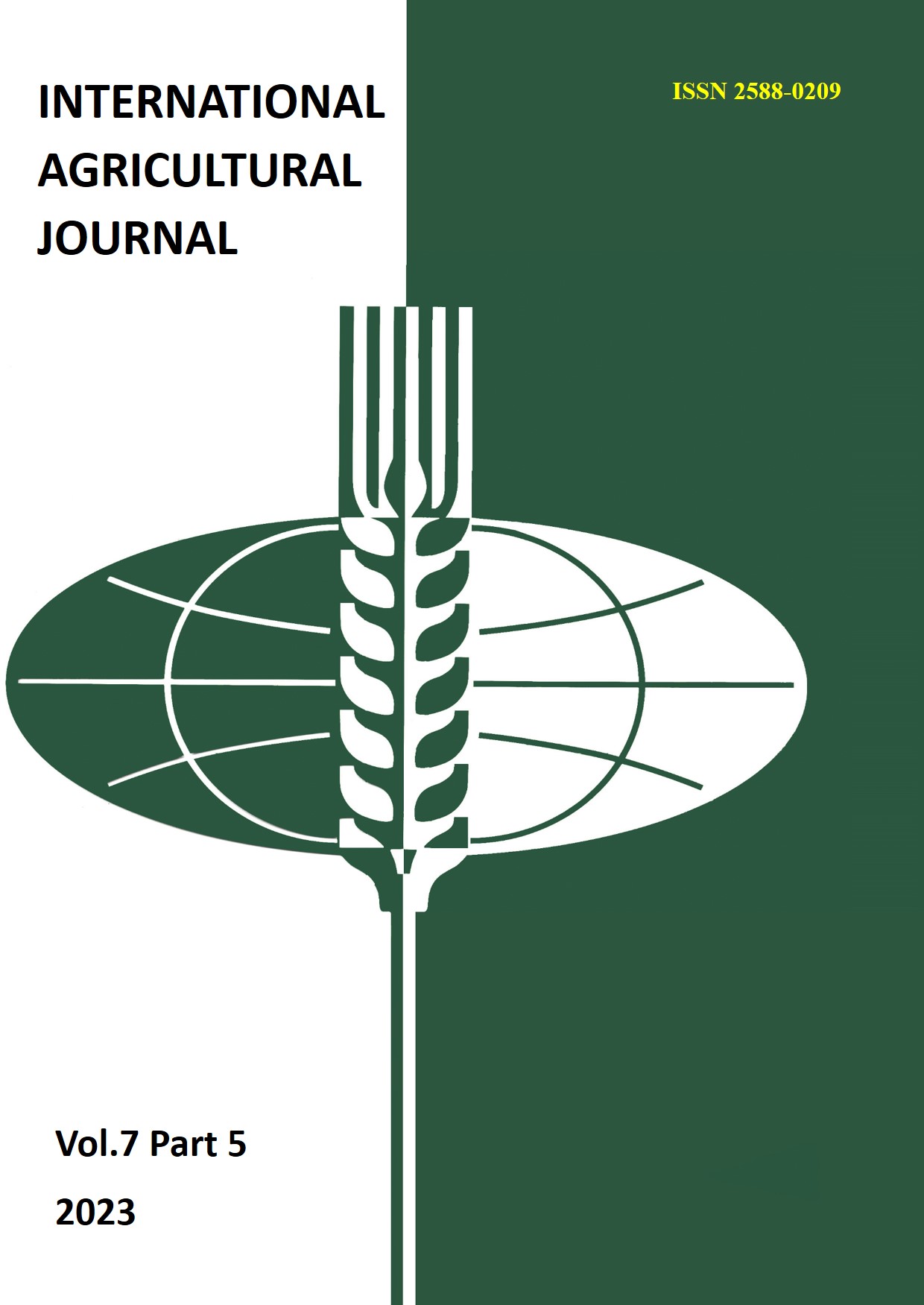ASSESSMENT OF THE EFFECTIVENESS OF THE BASIS IN THE COMBAT OF WEEDS IN CORN AGROCENOSIS
Main Article Content
Abstract
The leading reason for the decline in the yield of field crops is the weediness of their crops. Weeds are distinguished by a high level of adaptability to the places where they grow, the ability of seeds to remain viable for a long time, a large number of seeds formed, etc. All of the above explains the need to use a set of control measures for the complete destruction of weeds in crops. The herbicide Basis used in the experiment is a mixture of two active ingredients: 500 g/kg rimsulfuron + 250 g/kg thifensulfuron-methyl. The purpose of the study is to assess the effectiveness of the Basis in the fight against weeds in the corn agrocenosis of the forest-steppe zone of the Chechen Republic. The study was conducted in the period 2016-2019. in the forest-steppe zone of the Chechen Republic. During the species survey of weeds, a complex type of weed infestation was established in the experiment. In the corn crops of the forest-steppe zone of the Chechen Republic, about 25 species of weeds, representatives of 20 families, have been identified. The results obtained are necessary to improve measures to combat weeds in corn agrocenoses in the steppe zone of the Chechen Republic. In crops of corn hybrids in weed control in the forest-steppe zone of the Czech Republic, the most effective is Basis at a dose of 20 g/ha.
Article Details
References
2. Adinyaev E.D. Techniques for increasing the yield and grain quality of corn hybrids of domestic and foreign selection. / E.D. Adinyaev, A.G. Amaeva, D.O. Palaeva, M.Kh. Kavarnukaeva, N.L. Adaev. // News of the Mountain State Agrarian University. - 2012. - T. 49. - №. 1-2. - P. 7-11.
3. Guba E.I. Herbicides for corn protection. / E.I. Guba, V.N. Bagrintseva, S.V. Kuznetsova. // Protection and quarantine of plants. - 2021. - № 6. - P. 21-23.
4. Zakharova M.N., Rozhkova L.V. Biological and economic effectiveness of herbicides in protecting corn crops for grain in the Ryazan region. / M.N. Zakharova, L.V. Rozhkova. // Agricultural science. - 2023. - № 5. - P. 88-92.
5. Isaev V.V. Weed forecasting and mapping. / V.V. Isaev. // M.: Agropromizdat, 1990. - 192 p.
6. Kostyuk A.V., Lukacheva N.G. Efficiency of foliar herbicides in corn crops for grain. / A.V. Kostyuk, N.G. Lukacheva. // Siberian Bulletin of Agricultural Science. - 2018. - T. 48. - № 4. - P. 20-26.
7. Guidelines for field testing of herbicides. M., 1981. - 46 p.
8. Okazova Z.P., Agaeva F.A., Medoeva N.S. Methods of environmental research. Database registration certificate No. 2020620373 dated 28.02.2020. Application № 2020620223 dated 18.02.2020.
9. Okazova Z.P. The harmfulness of the weed component in corn crops. / Z.P. Okazova, A.G. Amaeva, I.M. Khanieva, Kh.T. Nogmov, A.B. Zabakov. // International Agricultural Journal. - 2023. - № 2(392). - pp. 197-199.
10. Khanieva I.M. The influence of varietal characteristics and sowing dates on the yield of sweet corn in Kabardino-Balkaria. / THEM. Khanieva, Z.S. Shibzukhov, Yu.M. Shogenov. // Problems of development of the agro-industrial complex of the region. - 2018. - № 2(34). - P. 102-108.
11. Benvenuti S. Weed dynamics in the Mediterranean urban ecosystem: ecology, biodiversity and management. / S. Benvenuti. // Weed Res. – 2004. - V.44. - P.341-354.
12. Kim, D.S. Modeling herbicide dose and weed density effects on crop: weed competition. / D.S. Kim. // Weed Research, 2002. V.42. P. 1-13.11. Benvenuti S. Weed dynamics in the Mediterranean urban ecosystem: ecology, biodiversity and management. Weed Res. – 2004. - V.44. - P.341-354.

